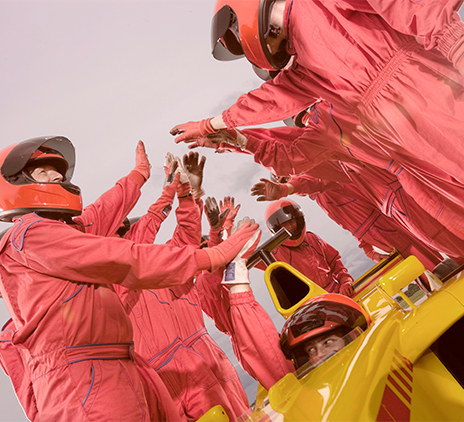-
SOC Attestation
Independent opinion attesting to the commitment of service providers to sound internal controls
-
Audit and review of financial statements
Credibility of your company's accounting activities in accordance with the legislation in force
-
Assurance of Non-Financial Reports
It aims to meet the needs of the business, being able to contemplate different bases and sectorial and global development guidelines
-
Assurance of Integrated Reporting and Sustainability Reports
Differential for rendering accounts and demonstrating the engagement of organizations in relation to sustainable practices and their generation of value
-
Assistance in accounting definitions
Quality, comparability and transparency of financial information in your company
-
Accounting, Labor and Tax Compliance
Permanent diagnostics and advice to raise the level of controls and mitigate risks
-
Pre-Audit Diagnosis
Diagnostics capable of offering support according to the purpose and needs of the business
-
Assessment reports for consolidations, spin-offs, and mergers
Technical evaluation of net assets at book value or of net assets adjusted to market prices
-
Capital Markets
Complete analysis and preparation for strategic fundraising operations

-
Business Consulting
Approaches compatible with technologies that support corporate decision-making and stimulate innovation
-
Strategy & Transactions
Performance of operations and capital structure to enable more efficient corporate transactions
-
FIDS – Forensic, Investigation & Dispute Services
Identification, protection and prevention of risks to preserve business integrity and security
-
Risk and Compliance - BRS
Risk management, process improvement to achieve strategic objectives
-
Judicial Administration in Business Recovery
Global teams and structures to work with the deep knowledge, legality and ethics that the issue requires
-
Business Restructuring and Recovery
Assertive plans and agile actions to recover your company's strategy and performance
-
Global Mobility Services
International mobility programs in compliance with local tax legislation and optimized costs
-
Home page
Financial Statements
-
Transfer Pricing
Review or elaboration of calculations that allow the most assertive compliance in operations abroad
-
Labor & Social Security
Identification of existing risks and opportunities according to the current moment and future perspectives
-
Direct tax
Agile strategies for complying with laws and enabling regional and sectoral tax incentives
-
Indirect tax
Specialized support capable of increasing legal certainty involving different laws and jurisprudence
-
International Tax
Analysis and planning of scenarios in different jurisdictions, with integration into the Brazilian scenario

We’re currently living through a period of significant market change which has resulted in continuing organisation and HR challenges. After 18 months of responding to rapid transformation, now is the time for HRDs to take a step back and look at the bigger picture.
Rather than trying to bring things back to the way they were, we should move forward with the intention that change can, and will, continue to happen. Strategies must be robust and flexible enough to facilitate that change. This is where agility comes into practice.
Agile working in both operating and people models
Working in an agile way means employee performance is measured by output, productivity, and creativity, not in hours worked. Employees are given more autonomy than ever before, and you trust them to work flexibly. This not only enables you to act quickly as a business, but can also result in greater employee engagement, satisfaction, and productivity.
HRDs play a key role in championing an agile people model and its benefits. They will need to drive uptake to successfully bring future ways of working into your culture across the whole business. If you’re a HRD and don’t know where to start, here's five questions you can ask to begin embedding agile working into your people model:
1 Is your employee value proposition the best it can be?
Many employers and HRDs are still using their pre COVID-19 employee value proposition. You need to reassess the promise you make to your people to align more closely with the working world of today. Whether that includes the benefits you offer or the way you work generally, you need to ask if it is working for you to engage and retain people.
Consideration of financial and psychological wellbeing should be and will continue to be at the forefront of people’s needs, and can be tailored around this.
Now is the time to do a health check around your employee value proposition and build a new strategy that aligns to the wider business goals. Contact Katie Nightingale for help reassessing your employee value proposition and we can help you create a wellbeing tool kit that is fit for purpose. Bringing an objective perspective, we can show you quick wins and the impact that they can bring.
2 Are you doing enough to retain your current talent?
The employee life cycle is changing. Employees have had time to think about their wellbeing, resulting in a shifting perspective on what’s important to people. Because of this many organisations are moving to hybrid and agile working models, considering how best to balance meeting employee demand with the needs of the business.
If your company isn’t prepared to give your current workforce that agility in their ways of working, you could find yourself losing talent quickly.
3 Can your workforce work in a fluid way?
The way your workforce is made up may never look the same again. Thanks to recent events, businesses have learnt to be much more agile with the workforce that they have. For many this has included complimenting permanent workforce with contingent workers.
You need to consider what this means strategically from a workforce planning perspective, and if using this kind of model will give you a well-rounded workforce that is fit for the future.
4 Are you recruiting for the skills you need (and not the ones you think you need)?
It might be that your business used to have a traditional view around what skills it needed, but it’s likely that these have changed. Your job as a HRD is getting the leadership teams who think things will still go back to ‘normal’ to start thinking differently about what skills make a good employee. You will also need to show them how different skills such as empathy, and the ability to work in an agile way will benefit the business.
The importance of inclusive practices will only continue to rise as we work in a hybrid way with both onsite and remote workers. Finding and encouraging the right behaviours to ensure inclusion is now critical, particularly for people managers who often don’t get the full support they need to support their direct reports.
It’s vital to have that alignment with leadership teams, so that decision makers in the business realise they can’t just do what they did before if they want to continue to grow and retain talent.
5 What story are you using to attract talent – and will it get you the right people?
The brand story you’re telling in the marketplace is extremely important. Talent has the power and are asking for more, going to where employers will give them exactly what they want. People have realigned their priorities, from those with children or pets, to those who want to live further away from the city and cut down their commute. If you want to attract this talent with your employer brand, you need to show how that agile ethos runs throughout the business.
Likewise, the talent you attract needs to be able to align to your future strategy to help you keep things moving forward in an agile way. If you’re honest about this from the get-go, you’re more likely to attract the right people.
If you want to transform your people model to a more agile way of working, we can help you unpack your strategy. Contact Katie Nightingale to hear more about our HRD rooms, where we will help you move away from BAU and challenge your thinking on how to make your People strategy more agile.




